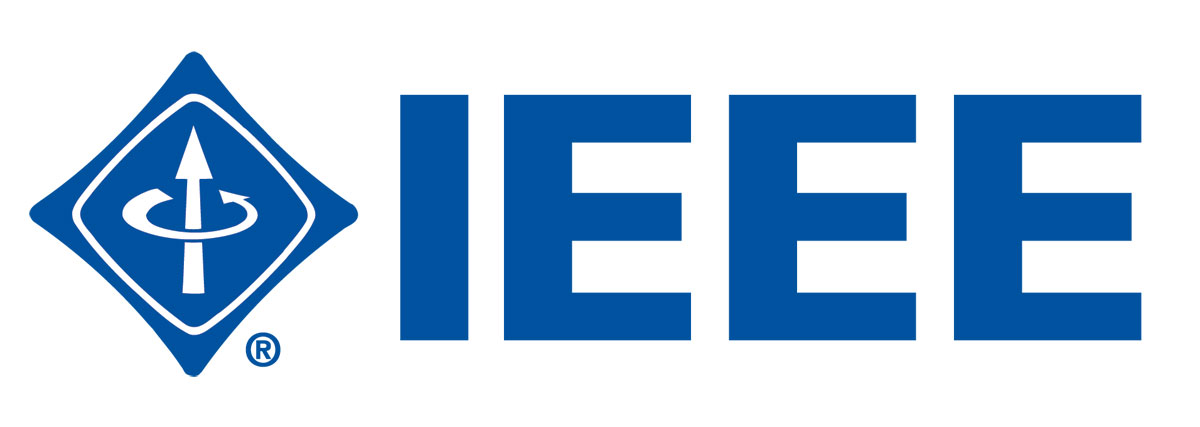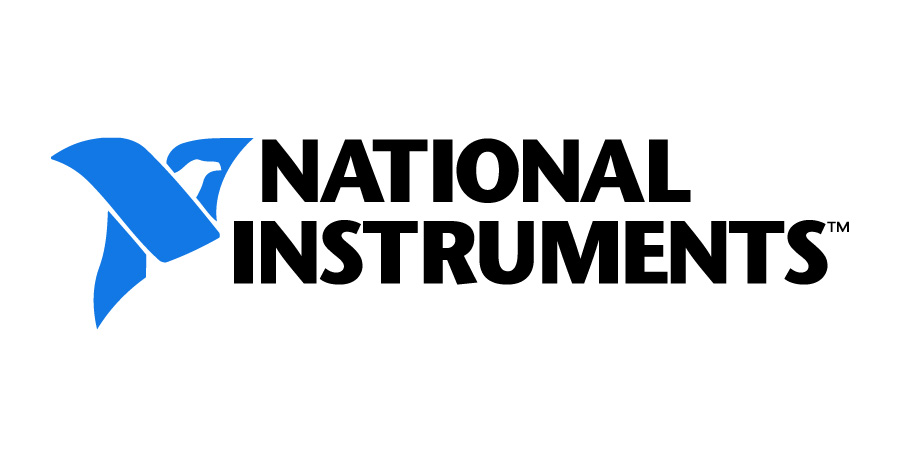















| Invited Speaker | Talk title | Time & Venue |
| Liam Barry Dublin City University |
All-optical wavelength conversion for fast reconfigurable optical networks | Friday, March 3, 9:50 am - 10:20 am IC&SR Auditorium |
| Parimal Parag IISc Bangalore |
Latency Analysis for Distributed Storage | Friday, March 3, 9:50 am - 10:20 am IC&SR Hall 1 |
| Sri Garimella Amazon |
Overview of Amazon Echo’s Speech Recognition System | Friday, March 3, 9:50 am - 10:20 am IC&SR Hall 2 |
| Ashok Veeraraghavan Rice University, USA |
Computational Imaging: Beyond the limits imposed by lenses | Friday, March 3, 9:50 am - 10:20 am IC&SR Hall 3 |
| Jishnu Tejas Networks |
Rethinking Communication Network Architecture | Friday, March 3, 2:20 pm - 2:50 pm IC&SR Auditorium |
| Ezra Ip NEC Labs |
Recent Advances in Mode-Division Multiplexed Transmission using Few-Mode Fibers | Friday, March 3, 2:20 pm - 2:50 pm IC&SR Hall 1 |
| Mrityunjoy Chakraborty IIT Kharagpur |
Sparse Adaptive Filters - an Overview and Some Emerging Trends | Friday, March 3, 2:20 pm - 2:50 pm IC&SR Hall 2 |
| Aswin Sankaranarayanan CMU |
Unconstrained 3D Imaging | Friday, March 3, 2:20 pm - 2:50 pm IC&SR Hall 3 |
| Klutto Milleth CEWiT |
Flexi-OFDMA waveform for 5G | Friday, March 3, 4:30 pm - 5:00 pm IC&SR Auditorium |
| K. P. Naveen IIT Madras |
Coverage Properties of One-Dimensional Infrastructure-Based Wireless Networks | Friday, March 3, 4:30 pm - 5:00 pm IC&SR Hall 1 |
| Thas Nirmalathas University of Melbourne |
Integration of Optical–Wireless Networks for Broadband Mobile Networks | Friday, March 3, 4:30 pm - 5:00 pm IC&SR Hall 2 |
| Praneeth Netrapalli Microsoft Research |
Parallelizing Stochastic Approximation Through Mini-Batching and Tail-Averaging | Friday, March 3, 4:30 pm - 5:00 pm IC&SR Hall 3 |
| Harish Krishnaswamy Columbia University |
Full Duplex Wireless: From Fundamental Physics and Integrated Circuits to Complex Systems and Networking | Saturday, March 4, 9:50 am - 10:20 am IC&SR Auditorium |
| Sharayu Moharir IIT Bombay |
Revenue Maximization in Two-Sided Markets | Saturday, March 4, 9:50 am - 10:20 am IC&SR Hall 1 |
| Arvind Mishra Sterlite |
Development of Next Generation Broadband Access Technologies | Saturday, March 4, 9:50 am - 10:20 am IC&SR Hall 2 |
| Srikanth R Microsoft India |
Speech recognition in the Indian Context | Saturday, March 4, 9:50 am - 10:20 am IC&SR Hall 3 |
| Zhang Ping, Beijing University of Posts and Telecommunications | Load Balancing in Small Cell Networks Using User Equipment Transfer | Saturday, March 4, 2:20 pm - 2:50 pm IC&SR Auditorium |
| Saurabh Saxena IIT Madras |
Wireline communication: The backbone of data transfer | Saturday, March 4, 2:20 pm - 2:50 pm IC&SR Hall 1 |
| Shajith Ikbal Mohamed IBM-IRL |
Document Extraction and Understanding | Saturday, March 4, 2:20 pm - 2:50 pm IC&SR Hall 2 |
| Oliver Cossairt Northwestern University |
SAVI: Synthetic Apertures for long-range, sub-diffraction Visible Imaging Using Fourier Ptychography | Saturday, March 4, 2:20 pm - 2:50 pm IC&SR Hall 3 |
| Rohit Budhiraja IIT Kanpur |
Joint Transceiver Design for QoS-Constrained MIMO Two-Way Non-Regenerative Relaying Using Geometric Programming | Saturday, March 4, 4:30 pm - 5:00 pm IC&SR Auditorium |
| Puduru Viswanadha Reddy IIT Madras |
Strategic and computational trade-offs in endogenous coalition formation | Saturday, March 4, 4:30 pm - 5:00 pm IC&SR Hall 1 |
Title: All-optical wavelength conversion for fast reconfigurable optical networks
Abstract: Optical networks are becoming more flexible and agile, driven by the increasing demand for bandwidth at lower cost and energy per bit. Networks now support polarization-multiplexed (pol-mux) modulation formats, flex- grids and optical layer switching and routing of signals. However, optical layer wavelength switching technologies have to mature for field deployment. This work outlines the use of four-wave mixing (FWM) in semiconductor optical amplifiers (SOA) to enable all-optical wavelength conversion of pol-mux coherent signals. The use of SOA as the nonlinear medium reduces the pump and signal power requirements compared to the nonlinear fibres. In addition the use of fast wavelength tuneable lasers as the pump sources in the FWM based systems can ensure fast reconfigurable wavelength converters.
Title: Latency Analysis for Distributed Storage
Title: Overview of Amazon Echo’s Speech Recognition System
Abstract: Echo's high accuracy speech recognition system uses the standard deep neural network (DNN) acoustic model, which is trained using in-house distributed Stochastic Gradient Descent (SGD) framework. This talk provides an overview of speech recognition technology focusing on acoustic modeling and our distributed DNN training framework.
Bio: Sri Garimella is a senior machine learning scientist and manager of Amazon speech recognition group in Bangalore. He has obtained PhD from the Johns Hopkins University, Center for Language and Speech Processing, Baltimore in 2012, and Master of Engineering in Signal Processing from the Indian Institute of Science, Bangalore in 2006. His research interests include deep learning, statistical machine learning, and speech & speaker recognition. He has several patents and publications in peer-reviewed journals and conferences.
Title: Computational Imaging: Beyond the limits imposed by lenses
Title: Rethinking Communication Network Architecture
Abstract: Communication networks were built with specialized hardware and software catering to a specific application like firewall, BRAS, ePC etc. With the advent of 5G and the requirement for a flexible communication and compute architecture, there is a need to rethink the communication network hardware much like your phone or laptop which can be procured from any vendor and shall be able to operate with an OS like your android OS/ iOS providing standard north bound Interface/APIs (NBI). This can then be enabled with specific software application(s) so as to provide specialized applications mentioned earlier. In this talk we will look in detail how this re-architecture can be done and will cover concepts under discussion in standards body like CORD (Central Office Re-architected as Data-center), NFV MANO (Management and Orchestration), etc. We will then analyse the technical challenges in implementing this architecture in general and specifically with regards to the disaggregation of 3GPP LTE layers.
Title: Recent Advances in Mode-Division Multiplexed Transmission using Few-Mode Fibers
Abstract: We review recent advances in few-mode fiber transmission. DSP complexity and mode-dependent gain (MDG) control are two key implementation issues. While DSP may be reduced by managing differential modal group dispersion (DMGD) and by using frequency-domain equalization, complexity still grows super-linearly with number of modes. MDG arises in inline amplifiers and can be controlled to a certain degree by optimizing the doping profile. The use of mode scrambling may ultimately be the most effective way of combatting both problems by enabling DMGD and MDG to grow only as the square root of distance. FMF are most likely to be deployed in data-centers that can benefit from high spatial information density. Elliptical-core FMFs is an attractive solution that behaves physically like parallel single-mode fibers.
Title: Sparse Adaptive Filters - an Overview and Some Emerging Trends
Title: Unconstrained 3D Imaging
Abstract: 3D scanning has come of age in the last decade with numerous commercially devices that exploit depth perception to enable advances in automation and entertainment. In this talk, I will discuss some of the key challenges facing 3D scanning today and highlight research from my lab that aim to deliver unconstrained and robust 3D imaging. This includes scanning of objects with complex spatially-varying reflectance, concavities, and even objects that are beyond the line-of-sight of the camera.
Bio: Aswin Sankaranarayanan is an Assistant Professor at Carnegie Mellon University (CMU). He earned his Ph.D. from University of Maryland, College Park. He was a post-doctoral researcher at the DSP group at Rice University before joining the faculty at the ECE Department at CMU in 2013. Aswin is the PI of the Image Science Lab at CMU; his research spans topics in imaging, machine vision, and image processing. He is the recipient of the NSF CAREER award in 2017, the 2016 Herschel M. Rich invention award from Rice Univeristy for work on lensless imaging, and the distinguished dissertation fellowship from the ECE Department at University of Maryland for his thesis work in 2009.
Klutto Milleth
CeWit
Title: Flexi-OFDMA waveform for 5G
Title: Coverage Properties of One-Dimensional Infrastructure-Based Wireless Networks
Bio: Dr. K.P. Naveen received the B.E. degree in ECE from the Visveswaraya Technological University (VTU), Belgaum (2005), and Ph.D degree from the Department of Electrical Communication Engineering, Indian Institute of Science, Bangalore (2013). Subsequently, he was a post-doctoral fellow with the INFINE team at INRIA Saclay, France. He has also worked at the ISRO Satellite centre, Bangalore (Jan-2006 to July-2007). Since Jan. 2016 he is with the Department of Electrical Engineering, Indian Institute of Technology Madras, as a DST-INSPIRE faculty. His research interests include modeling and performance analysis of wireless networks, stochastic games and optimal control.
Title: Integration of Optical–Wireless Networks for Broadband Mobile Networks
Abstract: As the mobile networks begin to offer broadband services, optical-wireless converged networks provide a feasible pathway to addressing key challenges associated with mobile network expansion. In this paper, we present our recent research in to the feasibility of optical access networks for meeting backhaul capacity challenge, the development of backhaul-first approach to network planning and small cell augmentation and proposed architectures for inter-basestation connectivity, forming the basis for optical-wireless network integration approaches.
Bio: Thas A Nirmalathas is the Director of the Melbourne Networked Society Institute and a Professor of Electrical and Electronic Engineering at the University of Melbourne. He also provides the academic leadership to the Melbourne Accelerator Program which he cofounded to foster entrepreneurial culture through experiential program based start-up acceleration methodologies.
Title: Parallelizing Stochastic Approximation Through Mini-Batching and Tail-Averaging
Abstract: Stochastic gradient descent (SGD) is one of the most popular optimization tool to learn deep networks. However, SGD is an inherently sequential algorithm and parallelizing SGD is an important and critical open problem.
Bio: Praneeth Netrapalli is currently a researcher at MSR India. He obtained his MS and PhD from UT Austin, and B-Tech from IIT Bombay, all in Electrical Engineering. His research interests are broadly in the areas of optimization and machine learning where he uses non-convex optimization techniques to obtain faster and provable algorithms for machine learning problems. Recently, he has also been working on obtaining faster and statistically optimal streaming algorithms.
Title: Full Duplex Wireless: From Fundamental Physics and Integrated Circuits to Complex Systems and Networking
Title: Revenue Maximization in Two-Sided Markets
Abstract: We consider the task of revenue maximization in two-sided markets in the setting where the supply and demand curves are unknown. Motivated by the fact that many two-sided marketplaces, e.g., rideshare platforms, are oligopolies, we first show that in oligopolistic markets, the revenue is a unimodal function of price. Next, we exploit this property to design an efficient algorithm to minimize the expected regret, i.e., the expected loss in revenue due to the lack of knowledge of the supply and demand curves. We provide theoretical performance guarantees for our algorithm and show (via simulations) that in the setting we consider, our algorithm outperforms known algorithms for the multi- arm unimodal bandit problem.
Bio: Sharayu Moharir received her B.Tech in Electrical Engineering and M.Tech. in Communications and Signal Processing from the Indian Institute of Technology Bombay in 2009 and a Ph.D. in Electrical and Computer Engineering from the University of Texas at Austin in 2014. She was a post-doctoral fellow in the School of Technology and Computer Science, TIFR from August 2014 to December 2015. Since January 2016, she has been with the Department of Electrical Engineering, IIT Bombay as an Assistant Professor. Her research interests include modeling and design of scalable algorithms for large-scale systems including content delivery networks, communication networks, and crowd-sourcing.
Title: Development of Next Generation Broadband Access Technologies
Title: Speech recognition in the Indian Context
Abstract: There are several challenges while building speech recognition system for Indic Languages, including Indianized English. Access to good Data is always a problem. We look at ways to deal with building acoustic models for low-resource languages. Another challenge encountered is code-mixing as many Indian speakers are multilingual and exhibit code-mixing in their use of language. Also the multilingual nature of the Indian populous implies the languages are accented by native tongues, e.g. Hindi spoken by a Tamil speaker and so on. Even local language speakers exhibit various accents in the same language e.g. Telugu spoken in Hyderabad differs significantly in accent to the Telugu spoken in coastal Andhra. This also extends to English spoken by Indians from various parts of India. We look at these challenges and the system built in Microsoft.
Bio: Radhakrishnan Srikanth received his Ph.D. in computer science (Neural Networks) in 1993 from Tulane University. After spending 7 years in academia, and two startups, he finally ended up in Microsoft in 2004. He is currently the Group Program Manager for Relevance in the AI & Research division in Search Technology Center in India, Hyderabad.
Title: Load Balancing in Small Cell Networks Using User Equipment Transfer
Abstract: This paper aims at balancing the load of small cell networks via user equipment (UE) transfer. To guarantee the fairness of both small cells and UEs, a load definition that jointly considers the small cells’ service ability and UEs’ data rate requirements is adopted. The system load balancing problem is formulated as an integer lexicographical minimization problem whose calculation complexity is NP-hard. Based on the property analysis of the constructed problem, an lexicographical bound of the system load vector is found and the optimal sub-channel allocation strategy is obtained. To reduce the complexity and achieve a satisfying load balancing performance, a UE transfer based load balancing (UTBLB) scheme is proposed by managing the load distribution in a lexicographical non-increasing manner. Simulation results indicate that the performance of UTBLB is approaching the optimal solution and the fairness of both small cells and UEs is improved.
Title: Wireline communication: The backbone of data transfer
Abstract: Evolution of wireline communication with first commercialization of telegraph in 1830s to 400Gb/s Ethernet standard in 2020s has served/will serve numerous applications from consumer electronics to high-performance scientific computing. In the last 45 years, the wired communication has evolved with every new IEEE 802.3x standard and scaling in CMOS technology as governed by Moore’s law has benefited the wireline transceiver prototype for every performance upgrade. This talk will elaborate on the evolution of wireline communication in the background of wirelessly connecting billions of nodes by 2020s. The talk will discuss the challenges of wireline communication and future opportunities in the midst of tapering in CMOS technology scaling.
Title: Document Extraction and Understanding
Title: SAVI: Synthetic Apertures for long-range, sub-diffraction Visible Imaging Using Fourier Ptychography
Abstract: Synthetic aperture radar is a well-known technique for improving resolution in radio imaging. Extending these synthetic aperture techniques to the visible light domain is not straightforward as optical receivers cannot measure phase information. In this work, we propose to use macroscopic Fourier ptychography (FP) as a practical means of creating a synthetic aperture for visible imaging to achieve subdiffraction limit resolution. We demonstrate the first working prototype for macroscopic FP in a reflection imaging geometry that is able to image optically rough objects. In addition, a novel image space denoising regularization is introduced to reduce the effects of speckle and improve perceptual quality of the recovered high resolution image. Our approach is validated experimentally where the resolution of various diffuse objects is improved sixfold.
Title: Joint Transceiver Design for QoS-Constrained MIMO Two-Way Non-Regenerative Relaying Using Geometric Programming
Abstract: Transceiver designs for multiple-input multiple-output (MIMO) two-way relaying are being actively explored. Most of the state-of- the-art studies optimize a system-wide objective function subject to the transmit power constraints on the two source nodes and the relay. Transceiver designs with quality-of- service (QoS) constraints have lacked attention in two way relaying literature. In this work, we study a MIMO transceiver design, based on the generalized singular value decomposition, that allocates power at the source and relay nodes to optimize the following per- stream rate-constrained objectives: i) network transmit power; and ii) sum-rate. In addition, we also maximize the rate of the transmit stream with the worst signal-to- noise ratio. Through extensive numerical evaluations, we demonstrate the superior performance of proposed design over the existing ones, not only with QoS constraints but also without them.
Title: Strategic and computational trade-offs in endogenous coalition formation
Abstract: We consider an Ν-player strategic form game with transferable utility. We use the so called δ-characteristic function to determine the bargaining strength of all possible coalitions. Here, the value (or bargaining strength) of a coalition is obtained under the behavioral assumption that the left-out players do not react strategically to the formation of that coalition, but stick to their Nash equilibrium actions in the Ν-player non-cooperative game. This assumption has a considerable computational merit compared to previous proposals in the literature such as γ-effectivity, where the left-out players react strategically using best-responses. For the class of games with multilateral externalities (e.g., pollution control, interference in wireless communications) we show that the δ-characteristic function is super-additive and has a nonempty core. Further, we show that δ-core is a selector (or subset) of the γ-core.
Bio: Puduru Viswanadha Reddy received his Ph.D. in operations research from Tilburg University, The Netherlands. After working as a postdoctoral fellow with GERAD, HEC Montreal, Canada, he joined the department of electrical engineering, IIT Madras, as an assistant professor during November 2016. His current research interests are in control systems and decision sciences (game theory and optimization).